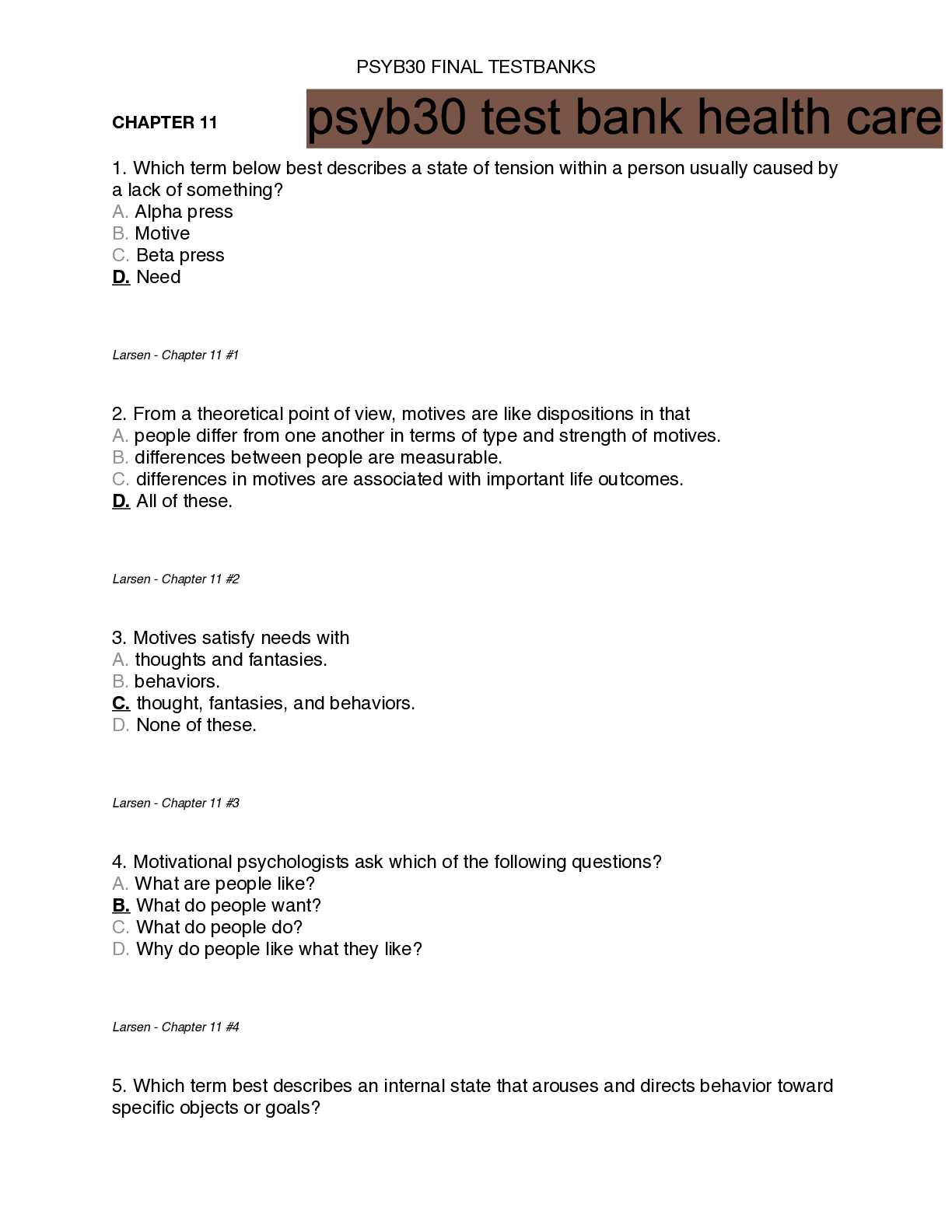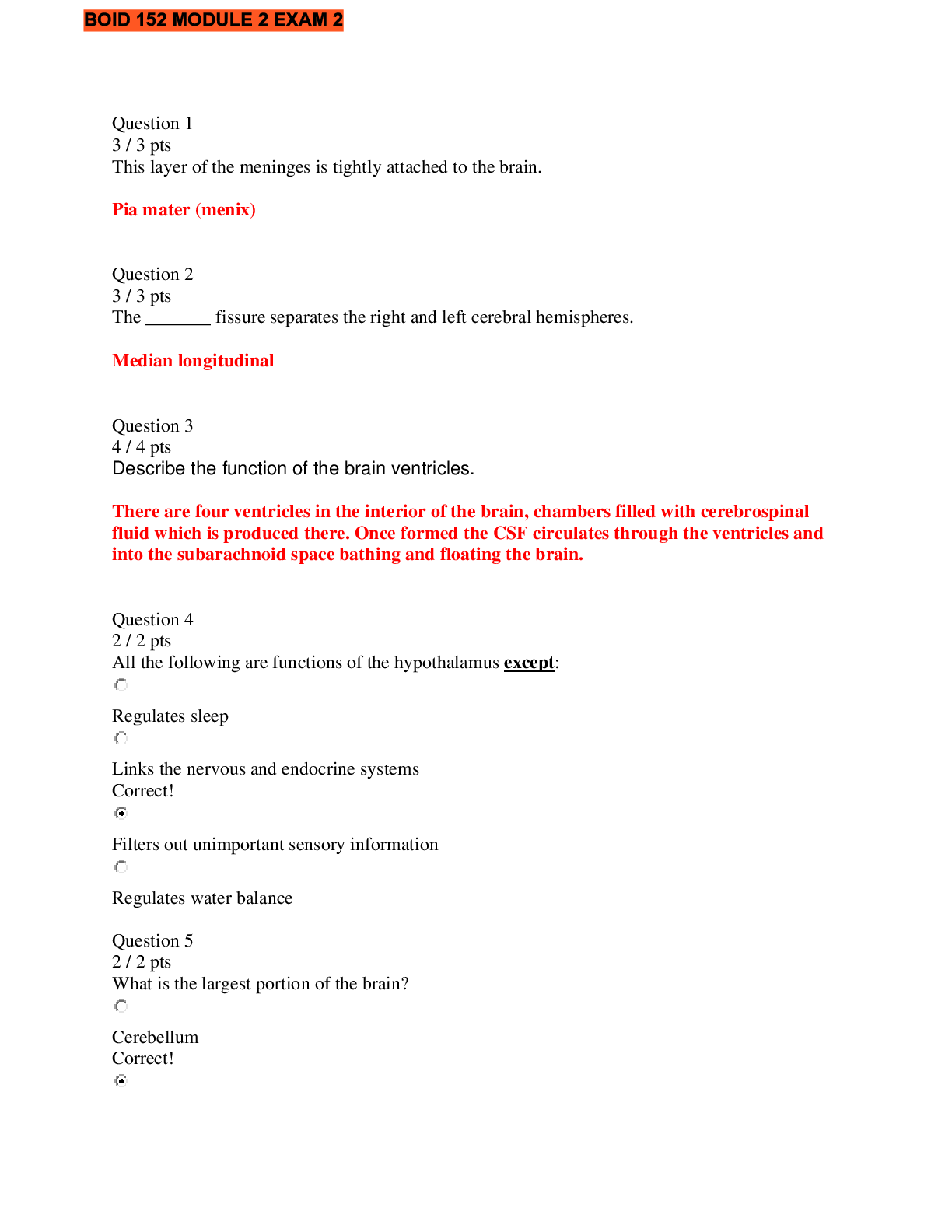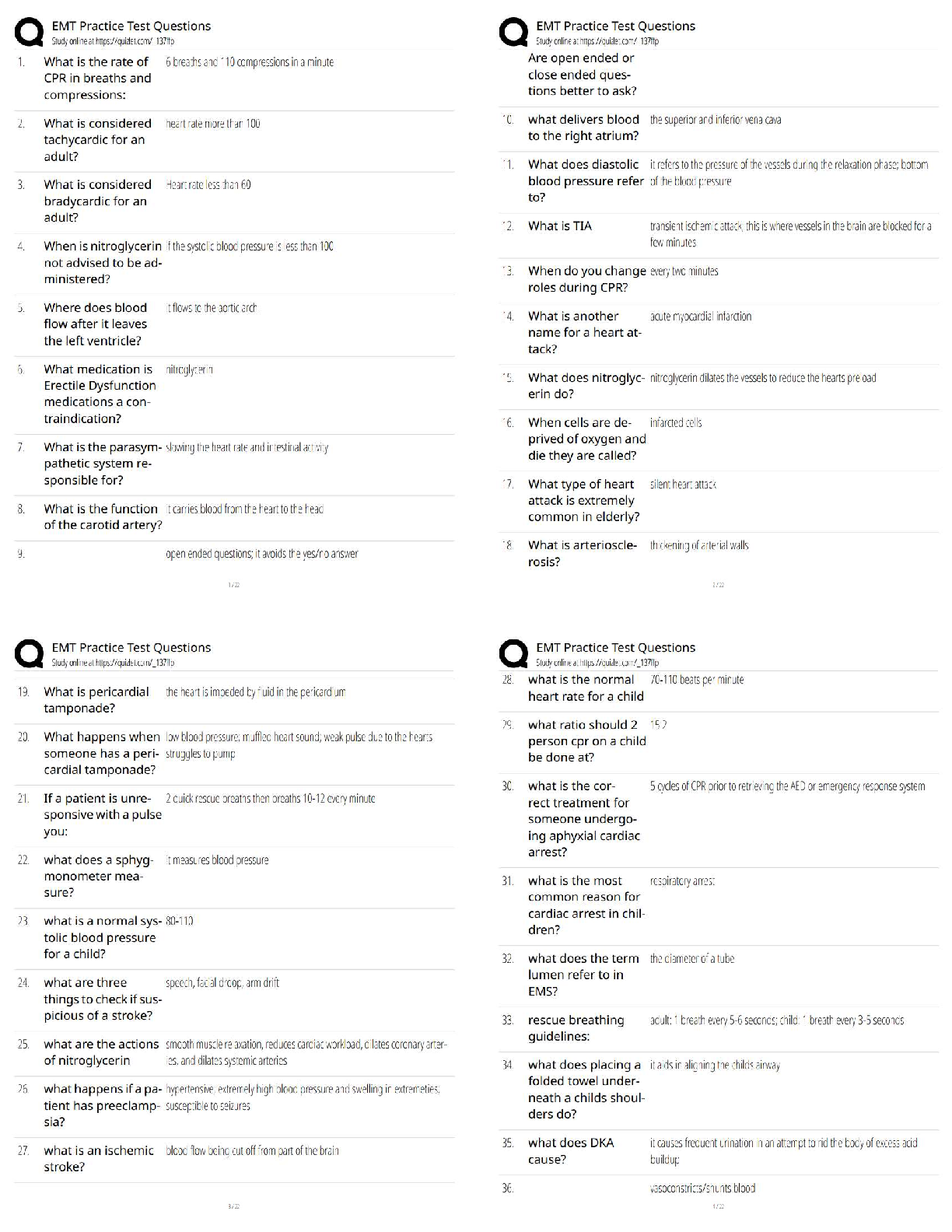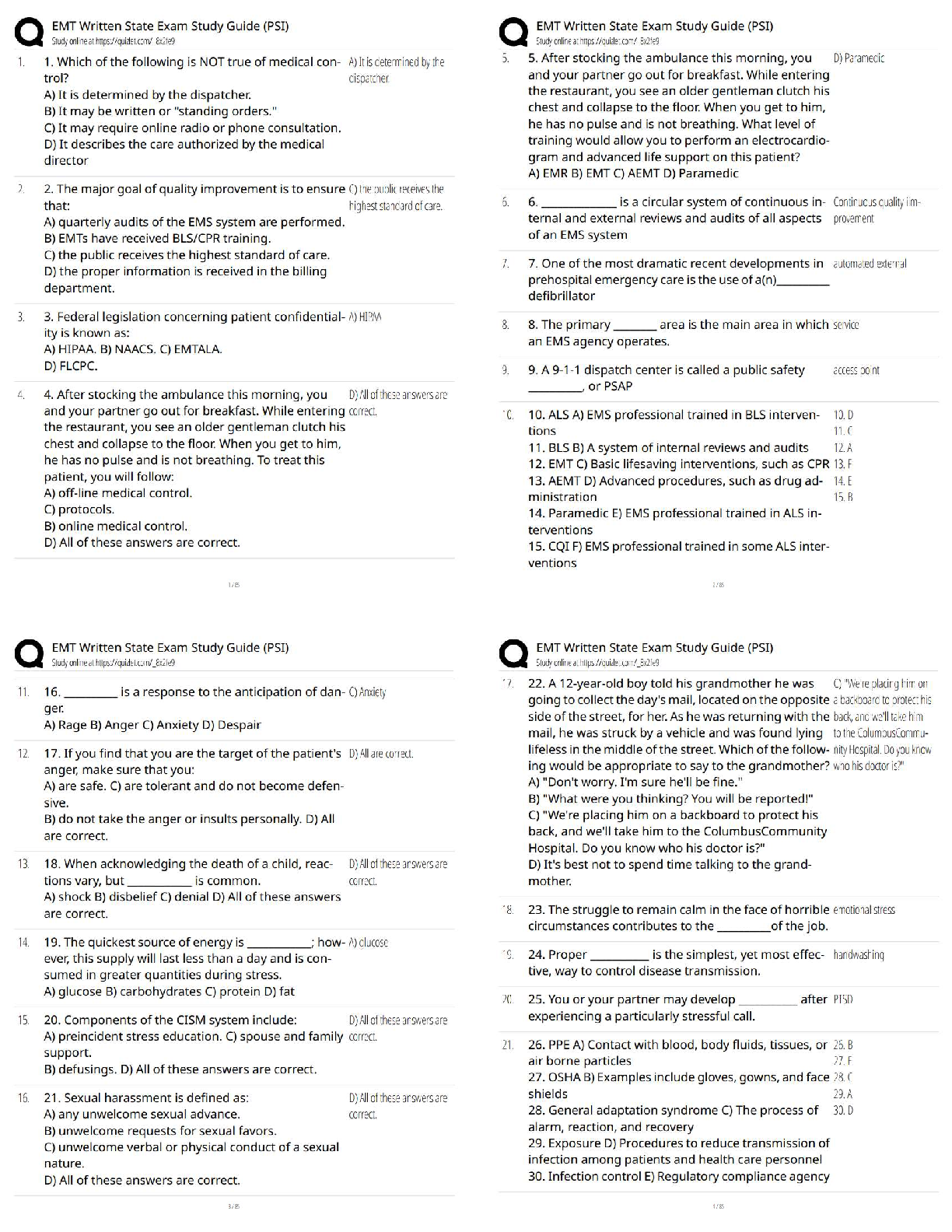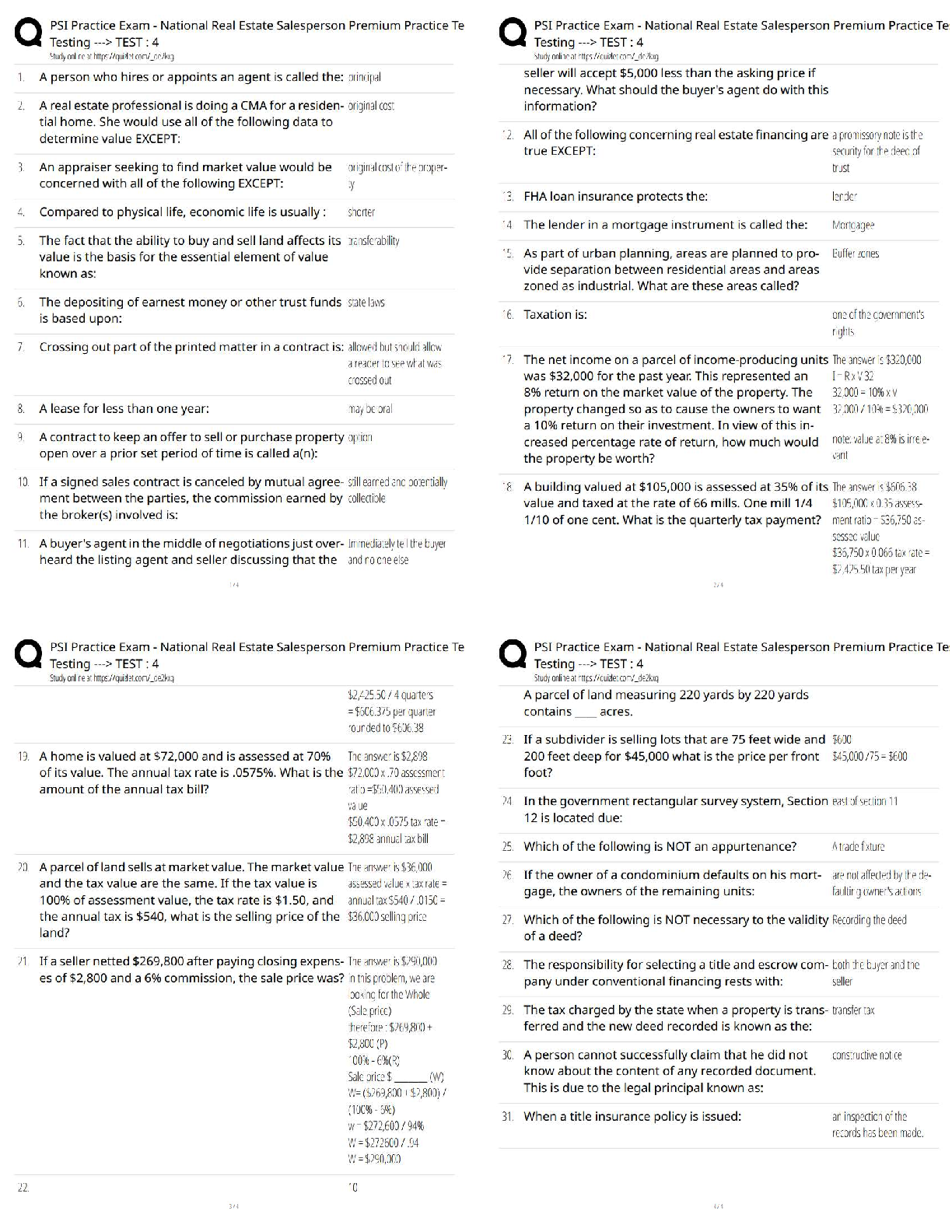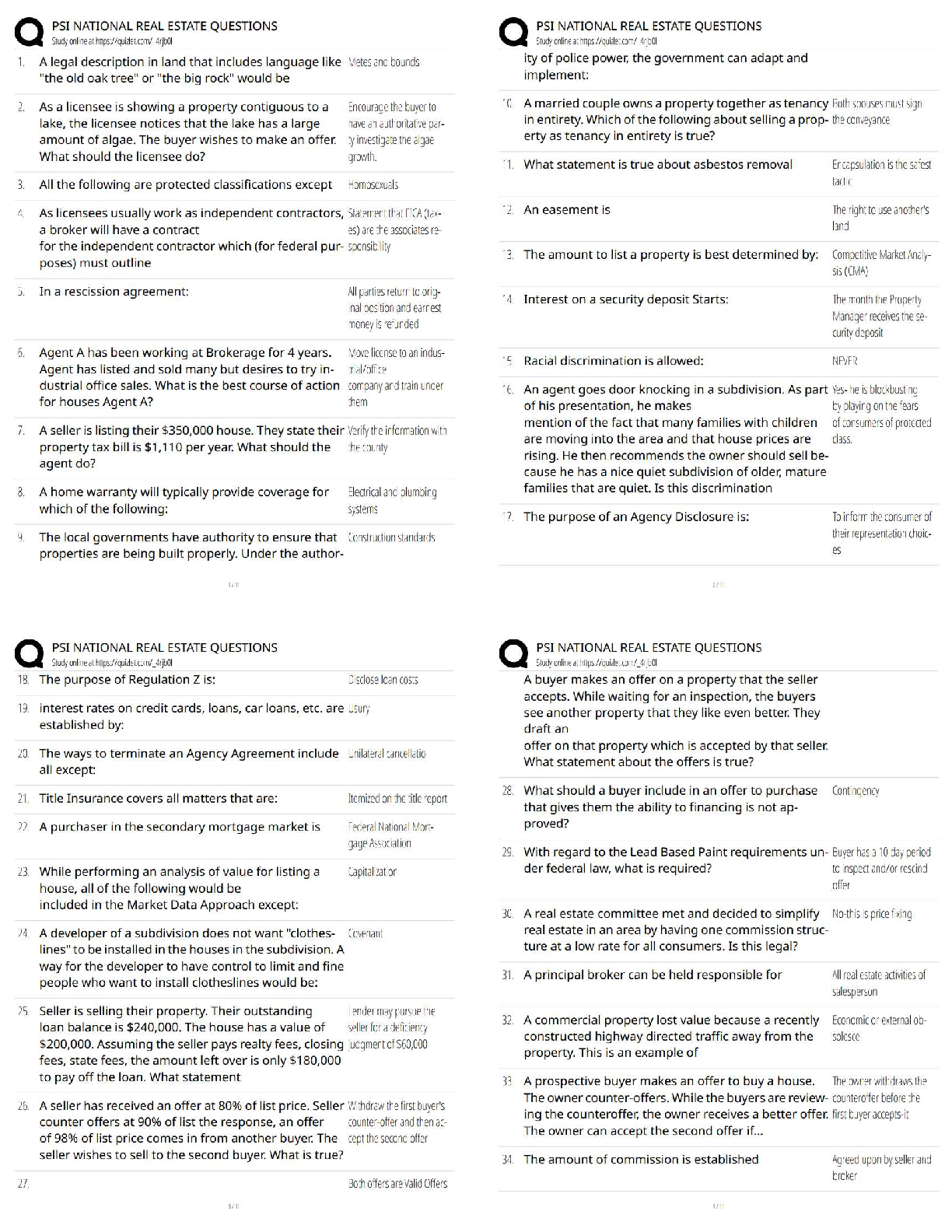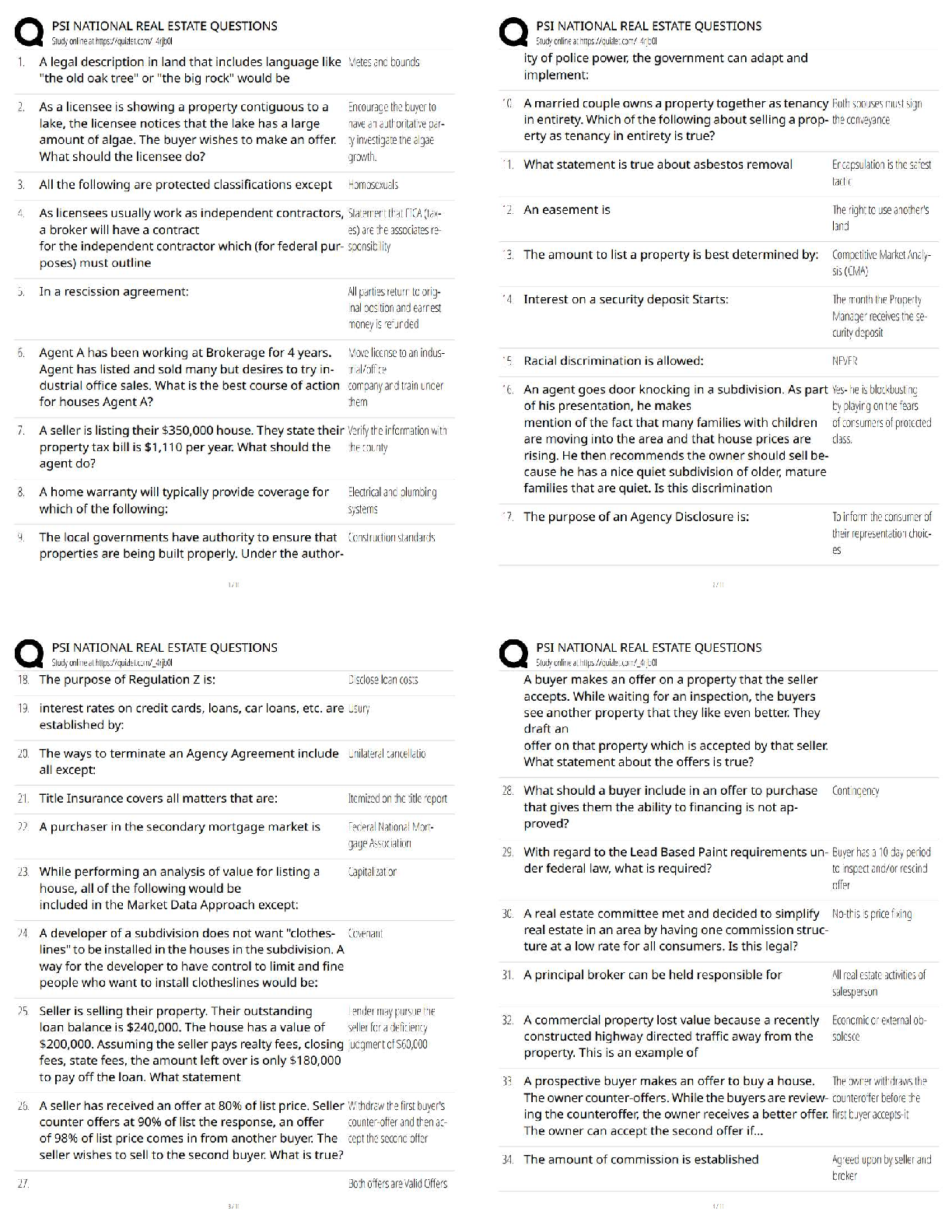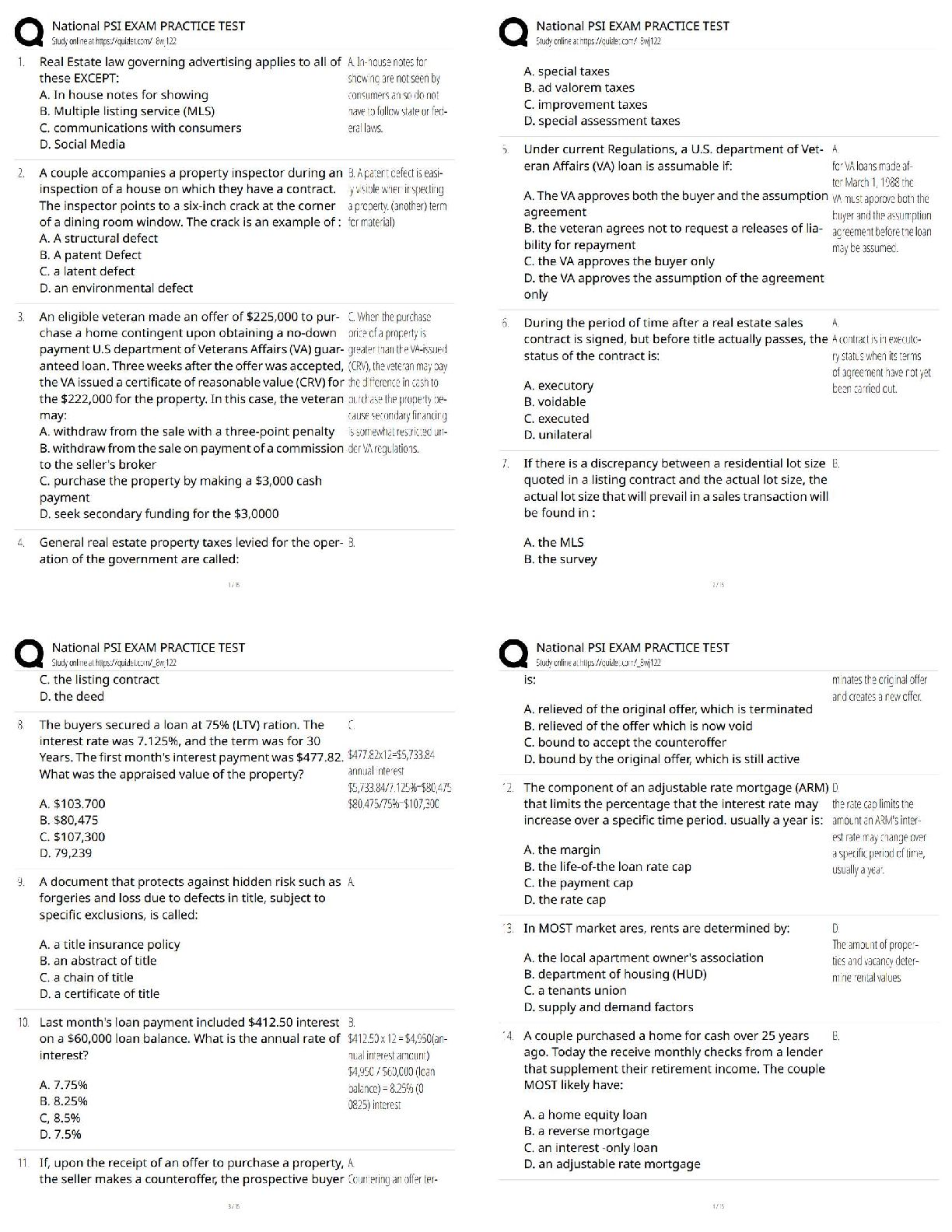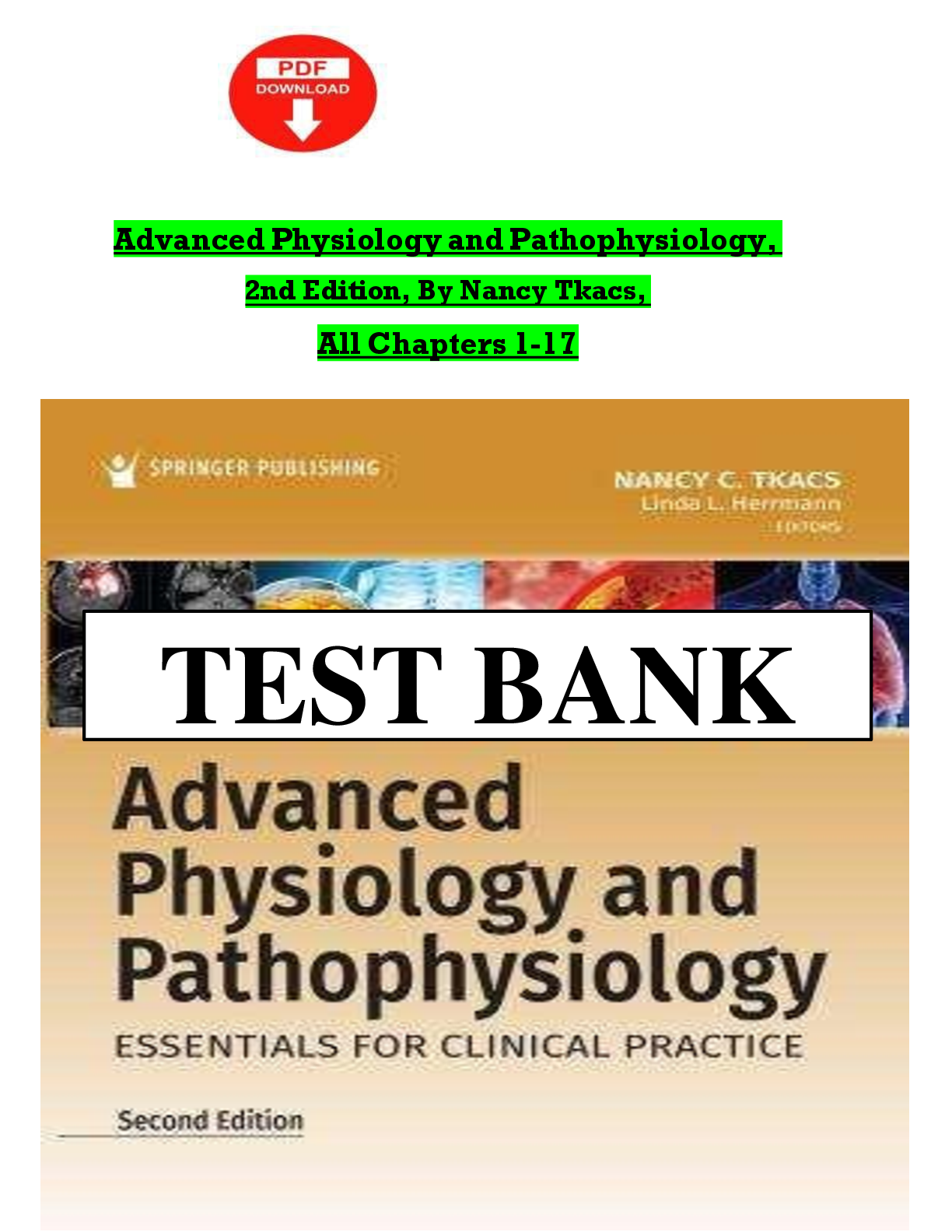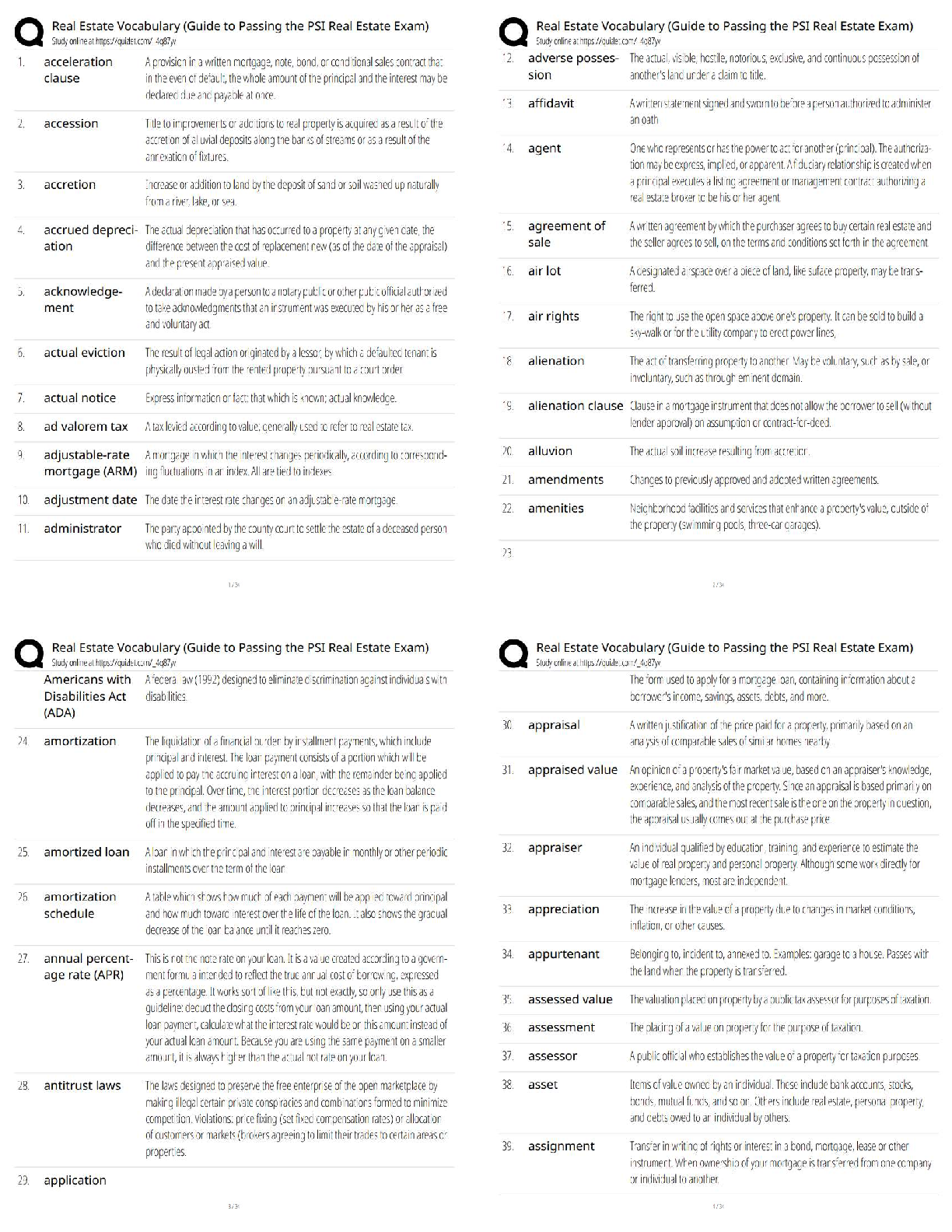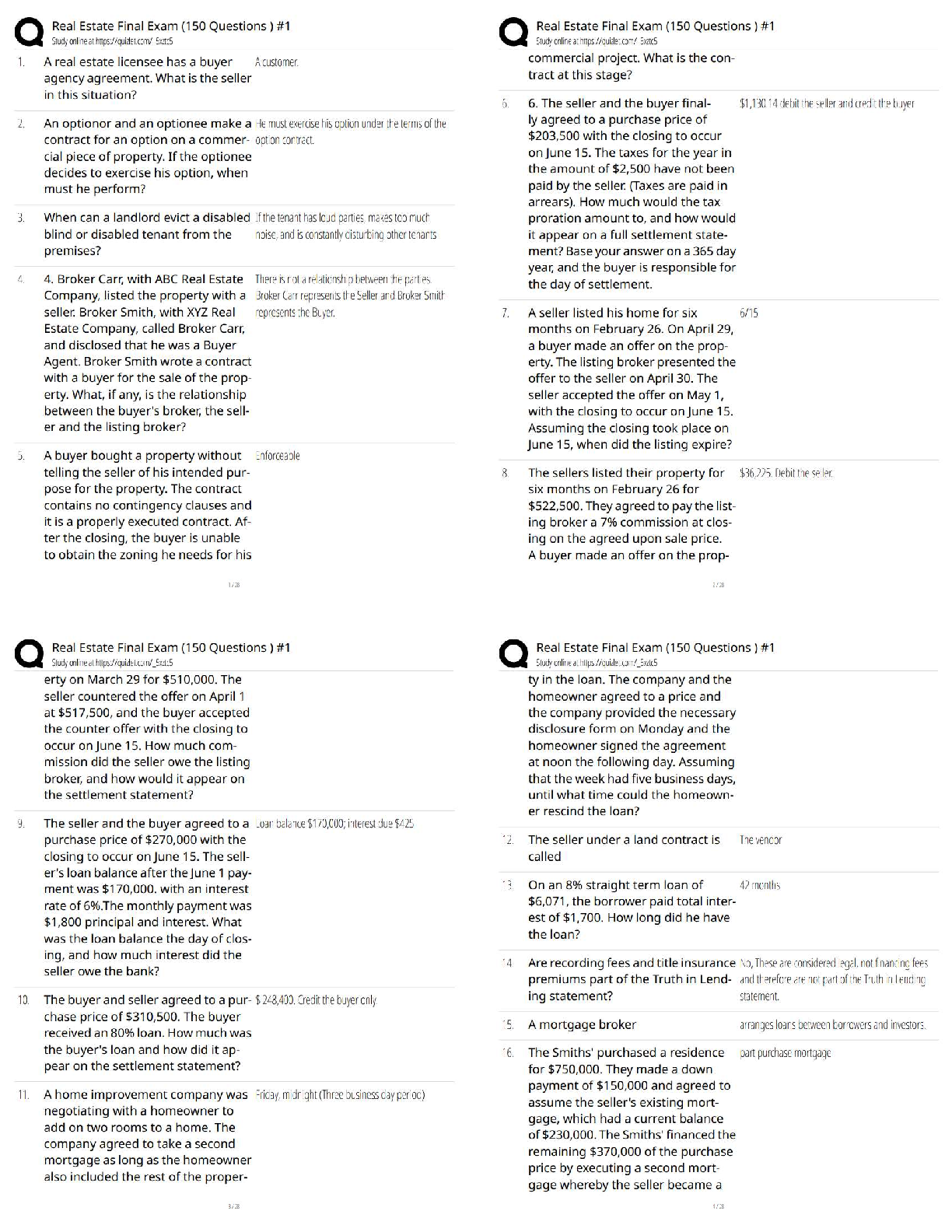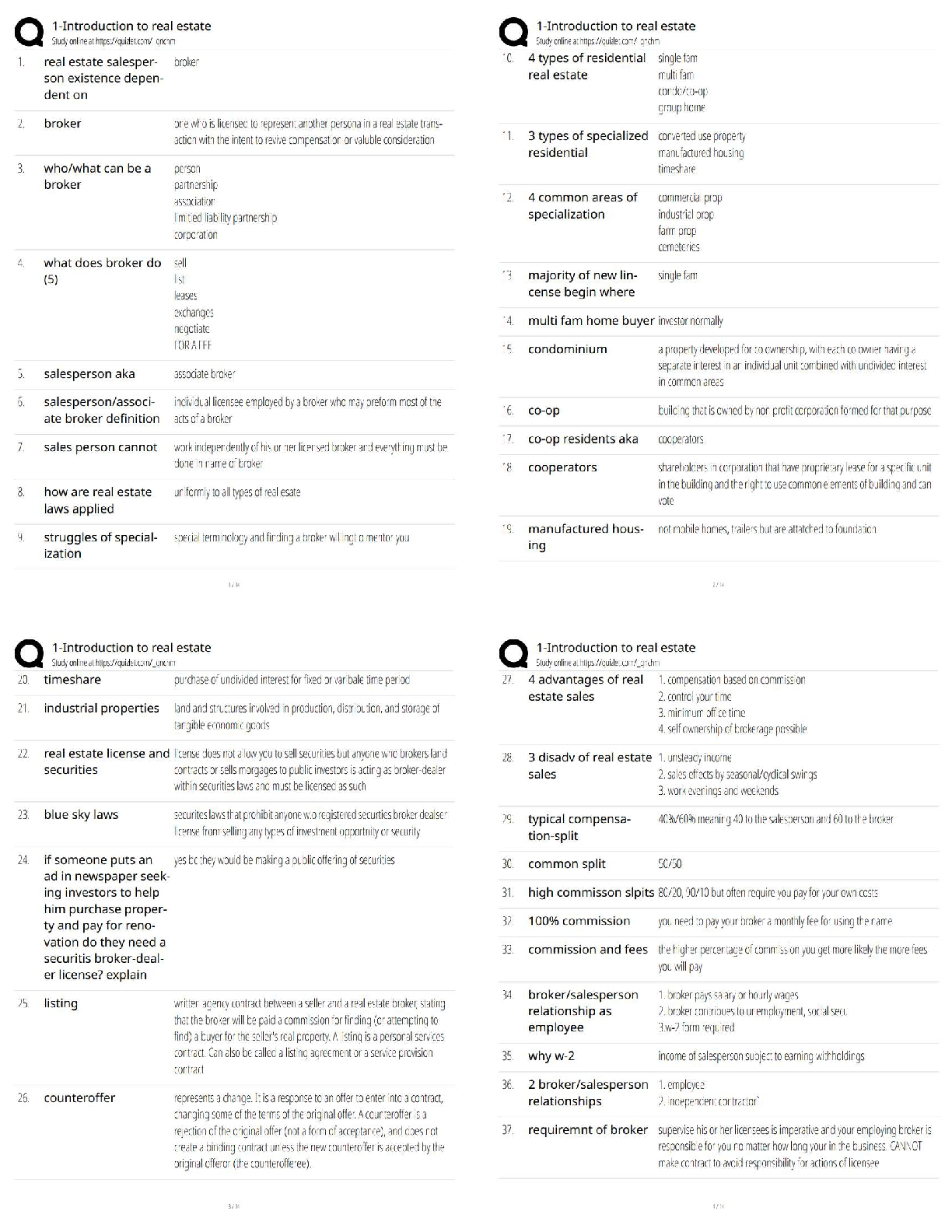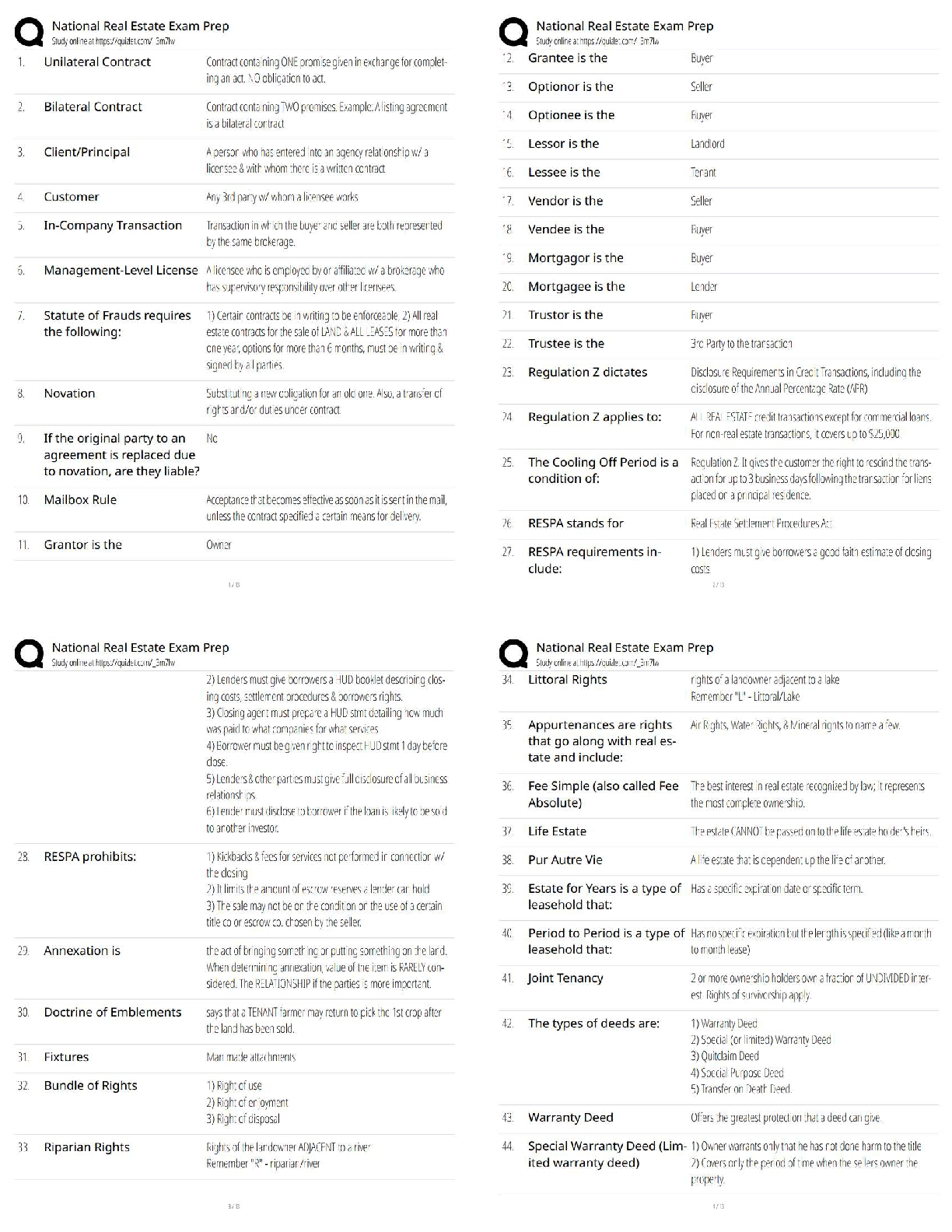Health Care > QUESTIONS & ANSWERS > EMT Trauma Questions and answers 2023 (All)
EMT Trauma Questions and answers 2023
Document Content and Description Below
D: manually stabilize his head. - A 42-year-old man was ejected from his car after it struck a bridge pillar at a high rate of speed. You find him in a prone position approximately 50 feet from his ca ... r. He is not moving and does not appear to be breathing. You should: A: administer high-flow oxygen. B: use the jaw-thrust maneuver. C: assess his breathing effort. D: manually stabilize his head. B: applying oxygen, elevating the lower extremities per protocol, and providing warmth. - Basic shock treatment includes: A: applying oxygen, elevating the upper body, and taking measures to prevent hypothermia. B: applying oxygen, elevating the lower extremities per protocol, and providing warmth. C: elevating the lower extremities, applying and inflating the PASG, and applying oxygen. D: applying and inflating the PASG, applying oxygen, and thermal management. A: below the C5 level. - A patient with a spinal injury may still be able to use his or her diaphragm to breathe, but would lose control of the intercostal muscles, if the spinal cord is injured: A: below the C5 level. B: above the C3 level. C: above the C5 level. D: between C1 and C2. D: cover her ear and nose with a loose gauze pad to collect the blood. - Following a head injury, a young female is semiconscious and is bleeding from the nose and left ear. You should: A: place a pressure dressing over her ear to prevent blood loss. B: control the bleeding from her nose by pinching her nostrils closed. C: insert a nasal airway to keep her tongue from blocking the airway. D: cover her ear and nose with a loose gauze pad to collect the blood. C: manually stabilize the leg above and below the knee. - During a soccer game, an 18-year-old woman injured her knee. Her knee is in a flexed position and is obviously deformed. You should: A: assess circulatory function distal to her injury. B: immobilize the knee in the position in which it was found. C: manually stabilize the leg above and below the knee. D: straighten the knee to facilitate immobilization. C: Apply a moist, sterile dressing covered by a dry, sterile dressing. - Following penetrating trauma to the abdomen, a 50-year-old woman has a large laceration with a loop of protruding bowel. How should you manage this injury? A: Carefully replace the bowel and apply an occlusive dressing. B: Apply a tight pressure dressing to control any external bleeding. C: Apply a moist, sterile dressing covered by a dry, sterile dressing. D: Apply a dry, sterile dressing covered by an occlusive dressing. A: apply a tourniquet proximal to the injury until the bleeding stops. - Despite direct pressure, a large laceration continues to spurt large amounts of bright red blood. You should: A: apply a tourniquet proximal to the injury until the bleeding stops. B: elevate the extremity and apply a tight pressure dressing. C: apply pressure to the pulse point that is proximal to the injury. D: place additional dressings on the wound until the bleeding stops. A: cover the wound with an occlusive dressing and apply direct pressure. - A gang member was cut on the left side of the neck during a fight and is bleeding heavily from the wound. His airway is patent and his breathing is adequate. You should immediately: A: cover the wound with an occlusive dressing and apply direct pressure. B: apply a tight pressure dressing and secure it in place with tape. C: perform a head-to-toe assessment to find and treat other injuries. D: apply high-flow oxygen via a nonrebreathing mask at 15 L/min. B: manually stabilizing his head with his helmet still on, removing the face mask, administering high-flow oxygen, placing him onto a long backboard, and restricting spinal motion with straps and a lateral head stabilizer. - A football player complains of severe neck pain and tingling in his arms and legs after being tackled. He is conscious and alert, has a patent airway, and is breathing adequately. He is in a supine position and is still wearing his helmet, which is tight-fitting. The MOST appropriate treatment for this patient includes: A: manually stabilizing his head, carefully removing his helmet, administering high-flow oxygen, applying a cervical collar, placing him onto a long backboard, and restricting spinal motion with straps and a lateral head stabilizer. B: manually stabilizing his head with his helmet still on, removing the face mask, administering high-flow oxygen, placing him onto a long backboard, and restricting spinal motion with straps and a lateral head stabilizer. C: manually stabilizing his head, leaving his helmet on, applying a vest-style spinal immobilization device, placing him onto a long backboard, and restricting spinal motion with straps and a lateral head stabilizer. D: carefully removing his helmet, manually stabilizing his head, applying a cervical collar, administering high-flow oxygen, placing him onto a long backboard, and restricting spinal motion with straps and a lateral head stabilizer. D: partial-thickness, 36% - A 44-year-old male experienced burns to his anterior trunk and both arms. He is conscious and alert, but is in extreme pain. Assessment of the burns reveals reddening and blisters. This patient has ________________ burns that cover _____ of his total body surface area. A: full-thickness, 18% B: first-degree, 27% C: second-degree, 45% D: partial-thickness, 36% C: Falling blood pressure - Which of the following indicates that a patient is in decompensated shock? A: Restlessness and anxiety B: Diaphoresis and pallor C: Falling blood pressure D: Tachycardia and tachypnea A: replace the avulsed flap to its original position. - A 21-year-old male was bitten on the left forearm by a dog. He is conscious and alert and denies any other injuries. An animal control officer is at the scene and has contained the dog. Your assessment of the patient's arm reveals a large avulsion with a peeled back flap of skin. Distal circulation is adequate and the patient is able to feel and move his fingers. In addition to bleeding control, you should: A: replace the avulsed flap to its original position. B: apply oxygen via a nonrebreathing mask. C: perform a rapid head-to-toe assessment. D: irrigate the wound for at least 15 minutes. C: Have you fallen before? - Which of the following questions is of LEAST pertinence initially when assessing a responsive 40-year-old woman who fell from a standing position? A: Did you faint before you fell? B: Did you hit your head? C: Have you fallen before? D: Can you move your hands and feet? A: The way in which traumatic injuries occur - Which of the following BEST describes the mechanism of injury? A: The way in which traumatic injuries occur B: The energy of an object in motion C: Your concern for potentially serious injuries D: The product of mass, force of gravity, and height C: secure the torso section prior to immobilizing the head. - When applying a vest-style spinal immobilization device to a patient with traumatic neck pain, you should: A: ask the patient to fully exhale as you secure the torso. [Show More]
Last updated: 2 years ago
Preview 1 out of 19 pages
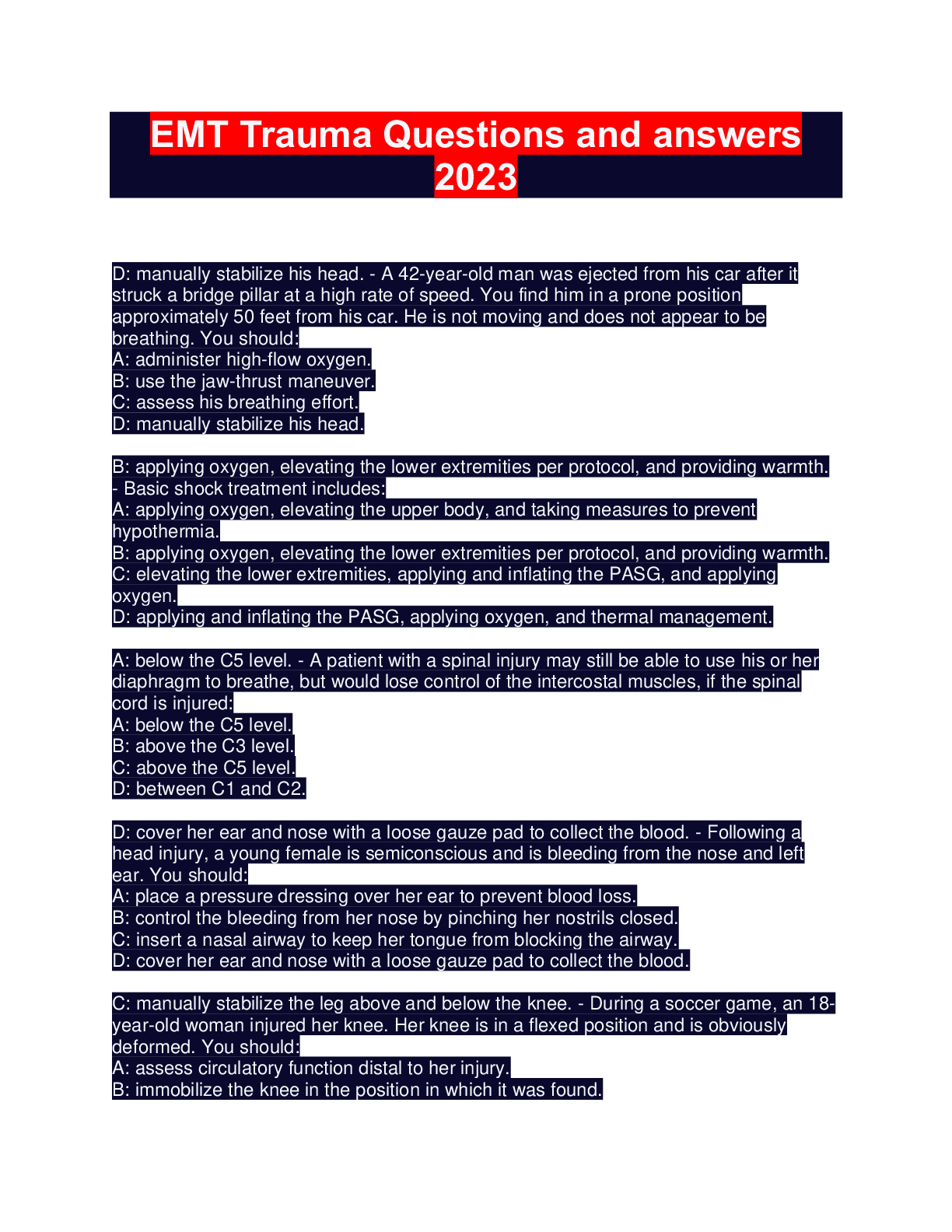
Buy this document to get the full access instantly
Instant Download Access after purchase
Buy NowInstant download
We Accept:

Reviews( 0 )
$7.50
Can't find what you want? Try our AI powered Search
Document information
Connected school, study & course
About the document
Uploaded On
May 10, 2023
Number of pages
19
Written in
All
Additional information
This document has been written for:
Uploaded
May 10, 2023
Downloads
0
Views
83

